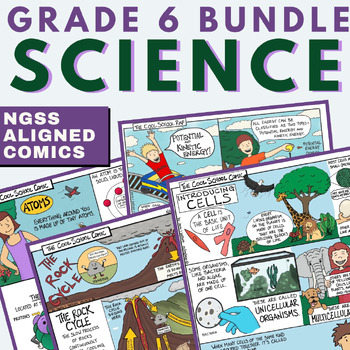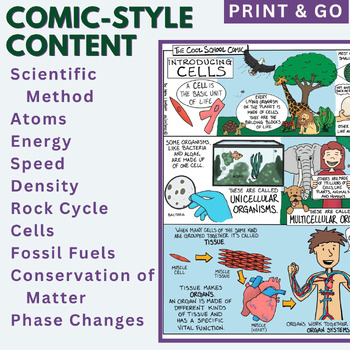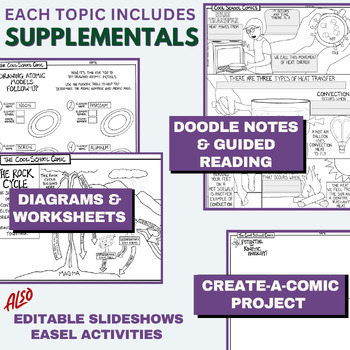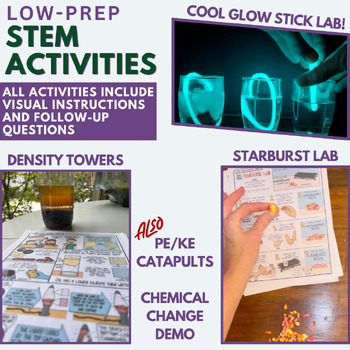6th Grade Science Curriculum - Middle School Reading Intervention Science Bundle
- Zip
- Google Apps™
- Easel Activity

What educators are saying
Products in this Bundle (7)
showing 1-5 of 7 products
Bonus
Description
This 6th-grade summer packet is jam-packed with science curriculum and activities in a highly engaging comic format! Ideal for summer school, preparing your 6th-grader for middle school, or simply keeping your learner on track during summer vacation, this print-and-go teaching resource will grab their attention and get them excited about reading science.
This bundle aligns with NGSS standards and includes editable slideshows, hands-on learning opportunities, Doodle Notes, worksheets, and more!
Topics Included
Scientific Method with Glow Stick Lab
Atoms and Molecules
Thermal Energy
Conservation of Matter
Matter and Phase Changes
Rock Cycle
Fossil Fuels
Cells
Density
Speed
Potential and Kinetic Energy
What makes Cool School Comics such an impactful learning tool?
They are FUN!
- This is the most crucial benefit.
- Students are more willing to participate and more engaged.
- The content STICKS.
Visual learning is EFFECTIVE.
- About 65% of the population consists of visual learners.
- Visual information is processed faster.
- Students who SEE information are more likely to retain it.
EASY to implement!
- These lesson plans are complete and ready to go, requiring minimal prep time.
- You only need to make copies, upload supplementals to your virtual classrooms, and set up the hands-on activities.
- Lots of flexibility! You can print these as posters, add them to interactive notebooks, hand them out to students, or share them virtually. There is plenty of room for modifications.
ACTIVE LEARNING
- Every lesson plan has a low-prep, wallet-friendly, hands-on component.
- Instructions are in a visual format
- Follow-up questions or a lab report are always included
Comics make content ACCESSIBLE
- Naturally differentiated, comics accommodate a wide range of learning abilities and styles.
- Great for classrooms with a diverse population of learners
- They can simultaneously rope in both your gifted and struggling students (and everyone in between).
- Reluctant readers gravitate toward comics.
- Comics help English Language Learners and SPED students find success.
Be the hip teacher seizing the graphic novels craze. Your students will LOVE it!
*Doodle Notes is a trademarked term used with permission. Please visit www.DoodleNotes.org for more information





